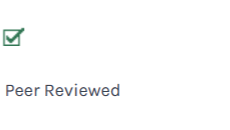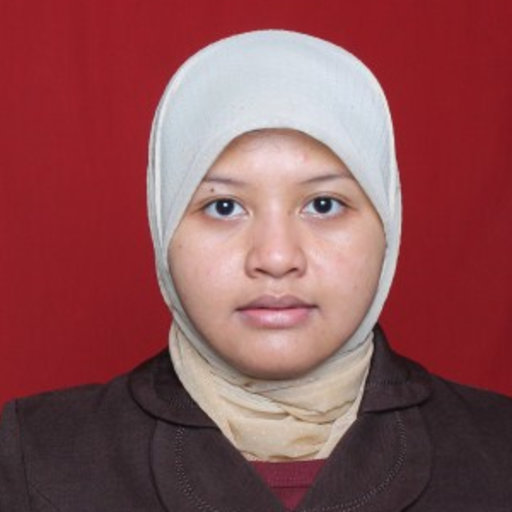Submissions
Submission Preparation Checklist
As part of the submission process, authors are required to check off their submission's compliance with all of the following items, and submissions may be returned to authors that do not adhere to these guidelines.- The submission has not been previously published, nor is it before another journal for consideration (or an explanation has been provided in Comments to the Editor).
- The submission file is in OpenOffice, Microsoft Word, or RTF document file format.
- Where available, URLs for the references have been provided.
- The text is single-spaced; uses a 12-point font; employs italics, rather than underlining (except with URL addresses); and all illustrations, figures, and tables are placed within the text at the appropriate points, rather than at the end.
- The text adheres to the stylistic and bibliographic requirements outlined in the Author Guidelines.
Author Guidelines
Author Guidelines and Selingkung Style
Instruction for Author
I. TYPES OF MANUSCRIPT
Original Articles
The focus of original articles should be on clinical studies or other original research that has not yet been published or is in the process of being prepared for publication elsewhere. The text should not be longer than 7,000 words, including the corresponding author, acknowledgements, figure legends, and a list of authors and their affiliations. A 250-word maximum short abstract, a reference list with a minimum of 25 citations primarily from international journals indexed by Scopus or Web of Science, and a maximum of 5 figures or tables should also be included (see below for more formatting guidelines).
Systematic Reviews
Systematic Reviews in the field of nursing involve comprehensive and critical assessments of evidence gathered from various data sources pertaining to a specific topic. A systematic search of relevant data sources is conducted, and the collected items are thoroughly assessed for inclusion or exclusion based on predefined criteria. The process should be documented and visually represented for clarity. Additionally, the review should provide detailed information about the characteristics of the study populations, exposure measures, and outcomes, along with references to the corresponding data sources. A structured abstract is required (the same as for short reviews). The total word count for the text, including acknowledgments, should not exceed 7,000 words, and the document should contain no more than four tables and/or figures while including a minimum of 40 references.
Meta-analyses
Meta-analyses should follow the same guidelines for systematic reviews. They should aim to furnish comprehensive details along with statistical evaluations of aggregated estimates for predefined outcomes, examining factors like study heterogeneity and quality, potential publication bias, meta-regression, and subgroup analyses when and where appropriate. Authors are encouraged to submit PRISMA flow diagrams or MOOSE checklists, depending on the study type. The editorial process for both systematic reviews and meta-analyses will be handled in a manner similar to original articles.
PREPARING YOUR MANUSCRIPT
Title
Write a title that is clear and simple, not to exceed 15 words. Include the following on the title page: (a) The whole manuscript title. (b) Indicate the name and correspondence addresses, including fax, phone, and email information. (c) Include the address for reprints if it's different from the corresponding author's. and (d) sources of assistance that demand citation.
A disclosure of any support received for this work from the National Institutes of Health (NIH), the Wellcome Trust, the Howard Hughes Medical Institute (HHMI), and other(s) must also be included on the title page.
Abstracts
Abstracts must be concise, under 250 words, and should not contain references or abbreviations. They should accurately highlight the article's key points and significance. Typically, abstracts should encompass the following elements:
Introduction: A brief overview (one or two sentences) of the study's background and purpose.
Method: Describe the research design, settings (avoid mentioning the specific location), participants (including selection process, inclusion/exclusion criteria, participant numbers, and relevant clinical/demographic characteristics if applicable).
Results: Present the primary outcomes or findings, including any relevant statistical significance levels and confidence intervals, if applicable.
Conclusions: Summarize the conclusions, emphasizing their alignment with the study's objectives and hypotheses
Keywords: Provide three to five keywords, alphabetically ordered, that accurately represent the paper's subject, purpose, methodology, and focus.
Introduction
The "Background" section serves to contextualize the study by offering a current overview of the field, including pertinent prior research and highlighting the study's significance to establish its scientific value or innovations. Avoid providing a detailed literature review or summarizing the results in this section. Instead, state the study's purpose towards the end of the introduction section.
Research Method
Method should be structured as follows:
- Research design
Describe the precise research methodology used in the study, including any applicable designs, such as correlational, experimental, quasi-experimental, cross-sectional, or any other. Explain in great detail how the study's use of this design was accomplished.
- Setting and samples
Indicate the date and location of the investigation without naming the precise research facility. Determine the sampling technique that was utilized to choose the participants or samples. Indicate the inclusion and exclusion requirements in detail. Describe the selection process for samples or participants and provide the sample size (and, if applicable, the population that the sample represents). Describe how the sample size was determined, including any sample size calculations or power analyses that might have been used.
- Intervention (applies to experimental studies)
If experimental studies are described, describe the intervention, including the setting and those responsible for delivering it. If a control group was part of the study, clarify the type of intervention provided to this group.
- Measurement and data collection
Specify the data collection tool that was used and mention it. Indicate, with the appropriate citations and references, whether the instrument was created, adopted, or modified from earlier investigations. Describe the scale, interpretation, and administration techniques, as well as the validity and reliability of the instrument. If the instrument was translated, describe the steps taken to keep the translation's reliability and validity intact. Please note in the text if the data were acquired by research assistants.
- Data analysis
Provide a clear description of the data analysis techniques used, including any computer software employed, if relevant. Offer references for specific analytic approaches or techniques, especially in the case of qualitative studies.
- Trustworthiness/rigor (applicable to qualitative studies)
If qualitative studies are conducted, explain the strategies implemented to ensure the trustworthiness and rigor of the qualitative data. This may involve discussing aspects like credibility, transferability, dependability, and confirmability.
- Ethical considerations.
Discuss the study's ethical difficulties, such as how respondents' or participants' informed consent was gained. Include a statement with the reference number of the health research ethics committee's permission.
Result
The results section summarizes the key discoveries of the study rather than presenting extensive data. Results should be presented clearly and concisely, using either text or graphics. It's essential to introduce the content of tables or figures. Tables are formatted with single spacing, systematically numbered as indicated in the text, and accompanied by brief titles. Explanations for non-standard information in the tables are provided in footnotes instead of the title. The total number of tables should not exceed six.
Discussion
In the discussion section, it's important to delve into the importance of the study's findings. The discussion should address the following aspects: How do your results align with the initial question or objectives detailed in the background section (what)? Have you offered scientific interpretations for each of your results or findings (why)? Do your findings align with the conclusions drawn by other researchers (what else)? Alternatively, are there any disparities worth noting?
Implication
The clinical implications should be in 2-4 sentences, describe the impact of the research result on clinical practice
Strengths and limitations
The study's effects on patient safety and quality should be discussed in the publication along with its limitations and findings.
Conclusion
The conclusions should address the research objectives and highlight the level of advancement achieved compared to the current state of knowledge. These conclusions should be articulated clearly to determine whether the study merits publication in the journal. It's crucial to offer a well-founded scientific rationale and mention potential applications and opportunities for further research. Additionally, provide recommendations for future research and discuss the implications for the safety of patients and healthcare quality.
Acknowledgment
In this section, please provide a brief acknowledgment to research funders and research participants. All individuals who have contributed but do not meet the criteria for authorship should be recognized in an Acknowledgements section. This includes individuals such as those who provided purely technical support or department heads who offered general assistance.
Submissions by Third Parties
It is required to include a statement in the Acknowledgements section of the manuscript and the accompanying cover letter when someone who is not named as an author submits a submission on behalf of the author(s). This sentence ought to:
- Specify the nature of this editorial support, including the name of the individual, their affiliated company, and the extent of their contribution.
- List any organizations that provided financial support for this aid.
- Confirm that the mentioned authors have given their consent for the paper to be submitted through a third party and have approved of any claims or disclosures, such as funding or conflicts of interest.
- The decision to potentially reject articles submitted by parties other than the authors themselves is reserved by International Journal of Patient Safety and Quality when appropriate.
Writing Support
People who have provided writing assistance, such as from a specialized communication company, should be acknowledged in the Acknowledgements section because they are not considered authors. Any writing assistance must be disclosed by the authors, who must also mention the person who provided it, as well as the organization with which they are affiliated and the amount of their involvement. The use of language-polish services does not require disclosure. Before your Declaration of Conflicting Interests (if relevant), any remarks, and your Reference, all acknowledgements must be included in your article.
Author contribution
Authors are urged to provide statements in the text outlining their unique contributions or roles.
Conflict of interest
International Journal of Patient Safety and Quality has a policy that necessitates all authors to submit a declaration regarding any potential conflicts of interest. This declaration enables the inclusion of a statement within the paginated pages of all published articles.
Please make certain to include a 'Declaration of Conflicting Interests' statement at the conclusion of your manuscript, following any acknowledgments but preceding the references section. If no conflicts of interest exist, kindly state that 'The Author(s) confirm(s) the absence of any conflicts of interest.'
References
The reference section includes all citations used to compile the manuscript and follow APA 7th edition guidelines. It is essential to include up-to-date citations, particularly those from the current year of writing, and to remove older references (over 10 years old) unless they hold significant relevance to your study. Your reference list should contain a minimum of 30 entries, with 80% originating from journal articles. It is recommended to avoid relying on secondary citations. Self-citations are permissible for up to 15% of the total references. Utilizing Reference Manager Applications like EndNote, Mendeley, Zotero, or similar tools is strongly encouraged.
II. REFERENCE STYLE
Citation style
- One source with one to three or more citations must include the last names of the authors: one author: (Pratiwi, I. N, 2023) ; two authors: ( Tristiana & Pratiwi, 2023) three or more author using et al., ; (Pratiwi et al., 2019)
- When citing from an institution, group, or organization, write the name of the institution, group, or organization followed by a comma and the publication year. However, as a note, when mentioning the citation for the first time, write the full name of the institution, group, or organization in the first paragraph or sentence. For example,
First citation : (Persatuan Perawat Nasional Indonesia, 2020)
The next cititation would be : (PPNI, 2020)
Reference writing style
Writing style for the bibliography in the International Journal of Patient Safety and Quality is in accordance with the APA 7th edition (accessible by default in Mendeley, Endnote, Zotero, etc.). It is strongly advised to create a bibliography using the cited program. For future editions, to improve the quality of the article Working papers, unpublished articles, and articles with sources from theses or dissertations are not accepted by the International Journal of Patient Safety and Quality. Only the source citations from each article's bibliography, which should be alphabetized by the author's last name or the name of the institution, should be included. Example:
Book
Achmad, G. N. V., Puspitasari, H. P., Sulistyarini, A., Nugraheni, G., Zairina, E., Setiawan, C. D., & Athiyah, U. (2014). Manajemen Farmasi Edisi 2: Manajemen Farmasi Edisi 2. (2 ed.) EGC.
Journal (DOI is if any)
- With DOI
Writer. (Year). The title of the journal article. Journal editorial name, volume(issue), page. DOI / Journal Article URL
Tristiana, R. D., Pratiwi, I. N., Wulansari, D., Yusuf, A., & Sulistyono, R. E. (2023). Adolescences experience of gender-based violence: a qualitative study. International Journal of Public Health Science, 12(2), 822–830. https://doi.org/10.11591/ijphs.v12i2.22614
- Without DOI
Dhamanti, I., Rachman, T., Ardian, M. C. L., Ramadhan, N. A., Zairina, E., & Fauziningtyas, R. (2021). Development of a patient safety-training program for health workers in Indonesia: Perspectives of health workers and hospital stakeholders. Malaysian Journal of Medicine and Health Sciences, 17(2), 183–188.
Paper published in the proceeding
Risqi, H., Nugraheni, D. A., & Medisa, D. (2016). Analisis Ketersediaan Obat Publik Pada Era Jaminan Kesehatan Nasional Di Dinas Kesehatan Kabupaten Sleman Tahun 2015. Prosiding Rakernas Dan Pertemuan Ilmiah Tahunan Ikatan Apoteker Indonesia 2016, February 2020, 178–182.
Article in Website
Putra, P.G.S. (2023, Agustus 28) Polusi Udara, Pembunuh Senyap Anak-anak. CNN Indonesia.https://www.cnnindonesia.com/nasional/20230827061322-20-990948/polusi-udara-pembunuh-senyap-anak-anak.
Rule/Regulation
Kementerian Kesehatan Republik Indonesia. (2022). Keputusan Menteri Kesehatan Republik Indonesia Nomor HK.01.07/Menkes/1559/2022 Tentang Penerapan Sistem Pemerintahan Berbasis Elekteronik Bidang Kesehatan dan Strategi Transformasi Digital Kesehatan. In Jakarta. https://yankes.kemkes.go.id/unduhan/fileunduhan_1669623021_65288.pdf
III. POLICY and REVIEW PROCESS
Review Policy
The selection of articles for publication in the International Journal of Patient Safety and Quality is conducted via a double-blind peer review process, with a focus on two primary aspects: the significance and impact of articles on the fields of patient safety and quality, both in theory and practical development. Editors and reviewers offer constructive feedback based on their evaluations of the authors.
Review Instruction
A peer reviewer's role involves thoroughly examining and assessing manuscripts within their area of expertise. They provide constructive guidance and candid feedback to the article's author. Peer reviewers analyze both the strengths and weaknesses of the paper, suggest methods to enhance its robustness and quality, and assess the manuscript's pertinence and credibility.
Before conducting the review, please take note of the following:
- Are you qualified to review the article that has been requested? Please notify the editor right away if you get a manuscript that falls outside your area of expertise and suggest a different reviewer in your email.
- Do you have the time to finish reviewing the report in two weeks? If you agree but need more time, please let the editor know right away or recommend another reviewer.
- Do we need to take into account any potential conflicts of interest? Conflicts of interest won't automatically disqualify you from reviewing, but if you have any, please let the editor know before you start. Feel free to contact the editorial office if you have any questions or worries about any conflicts of interest.
Review of the Article
While reviewing the article, please take into account the following aspects:
- Title:
Is the title effectively conveying the essence of the article?
- Abstract:
Does the abstract adequately summarize the article's content?
- Introduction:
Does the opening clearly identify the issue being discussed and evaluate the veracity of the author's submissions? The introduction typically should give a description of the study context, explain the research findings or any other relevant discoveries that are up for discussion, and explain the experiments, hypotheses, and procedures used.
- Content of the Article
Check for any instances of plagiarism in the content of this paper that exceed 25% in order to judge its originality and appropriateness for the journal. Using tools like Scopus, a quick literature search can be done to find any potential overlaps with already-published sources.
- Is the study still admissible for publishing if it was conducted by other authors before?
- Is the essay sufficiently fresh, in-depth, and intriguing to merit publication?
- Does it advance our knowledge?
- Is the paper in accordance with the journal's standards?
- Does the paper fit within the journal's goals and purview?
- Method
Comprehensive and perfect:
- Does the author provide an accurate description of the data collection process?
- Is the theoretical framework or source material suitable for this study?
- Is the exposure design appropriate for the response to the query?
- Is the information good enough for you to replicate the study?
- Does the article mention any of the following steps?
- Are there any novel techniques? Does the author provide a thorough explanation of any novel techniques?
- Is there a suitable sampling?
- Have the methods and supplies employed been sufficiently described?
- Does the article's exposure specify the type of data that is being recorded and how it was measured?
- Results:
The author is required to explain the research's findings at this point. It ought to be logically organized and clearly laid out. You must think about whether the proper analysis and statistical tool use have been done. The interpretation need not be mentioned in this part if you have a better statistical technique that can be employed in this investigation.
- Discussion and Conclusion:
- Are the statements in this section fairly and adequately supported by the results?
- Does the author compare the research findings to those of earlier studies?
- Do the research's findings in this article conflict with earlier hypotheses?
- Is there a description of how improved scientific research should be carried out in the conclusion?
- Tables and Pictures:
Is it appropriate to support the cited explanation with data that is simple to understand and analyze for the readers?
- Writing Styles
- Authors should focus their criticism on systematic reviews of the issues in the literature that are pertinent to their field of research.
- Reviews ought to be narrowly focused on a single subject.
- Every piece of exposure should be written in clear, proper English.
- Simple to comprehend
- Interesting reading
- Things that need to be considered:
- Perspective discusses experiences and circumstances relating to patient safety and quality issues from the perspectives of patients, practitioners, leaders in the field of medicine, educators, researchers, and policymakers.
- Originality Research
- The original data and testing must present data that offers a novel strategy for enhancing systems, procedures, and tool precision.
- Research strategy and observational analysis should make the viability, efficacy, and application of the research findings clear. Concerns about patient safety and quality from patients, practitioners, healthcare executives, educators, researchers, and policymakers are not the only topics covered.
- In Practice (case study), the paper should describe the current state of affairs with regard to the problems in patient safety and quality issues from patients, practitioners, health care leaders, educators, researchers, and policymakers, as well as any lessons that can be drawn from them.
- Reference
- First Person (Interview)
- Book Reviews
- Insight Technology (Product Review)
- Final Review
- All reviewer-submitted findings are kept completely private.
- Please let the editor know if you plan to discuss the article with a colleague.
- Don't get in touch with the author directly.
- Ethical issues:
- Plagiarism: If you believe the article contains a significant amount of work by other authors, please inform the editor.
- Fraud: It can be challenging to identify a fraud category, but if you think the results in the article are false, please let the editor know.
Complete "The Review" by the due date to the editorial office. Your suggestion for the article will be taken into account when the editor makes a final choice, and we really value your open feedback. When leaving a comment, kindly indicate the portion of the comment that is only.
Review Process
The Editor of the International Journal of Patient Safety and Quality (IJPSQ) initially reads each manuscript submitted for desk review. Without seeking outside evaluation, submissions with the wrong focus and breadth will be rejected right away. The reviewers would get manuscripts that were thought to be potentially interesting to our readership. The editors then choose one of several options, such as rejected, need significant revision, need minor revision, or accepted, based on the reviewer's advice.
Review duration
The manuscript review process usually takes 6 to 12 weeks.
IV. ACCESS POLICIES
Copyright
(a) We offer open access
(b) Using APA license type: CC-BY-NC-SA
Access and security setting (Archiving)
International Journal of Patient Safety and Quality (IJPSQ) follows the archiving policies established by Universitas Airlangga. Universitas Airlangga collaborates with Clockss to archive all journal files within its repository. According to these policies (2024), journals that have not yet been indexed by DOAJ will not be archived in Clockss. Therefore, International Journal of Patient Safety and Quality (IJPSQ) independently archives its manuscripts in the repositories of Universitas Airlangga (Library). Once IJPSQ is indexed by DOAJ, Universitas Airlangga (Library) will archive the journal files in Clockss.
Publishing schedule
The frequency of publication is twice within a year: in April and October
Articles
Section default policySection Policy



Copyright Notice
1. The journal allows the author to hold the copyright of the article without restrictions.
2. The journal allows the author(s) to retain publishing rights without restrictions.
3. The legal formal aspect of journal publication accessibility refers to Creative Commons Atribusi-Non Commercial-Share alike (CC BY-NC-SA), (https://creativecommons.org/licenses/by-nc-sa/4.0/)

Privacy Statement
The names and email addresses entered in this journal site will be used exclusively for the stated purposes of this journal and will not be made available for any other purpose or to any other party.












